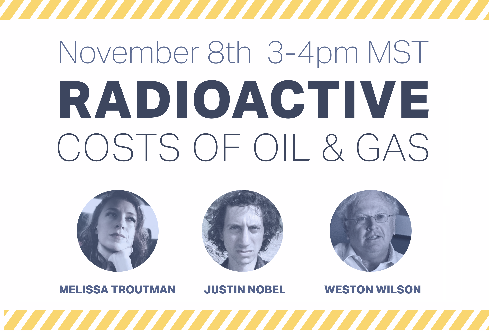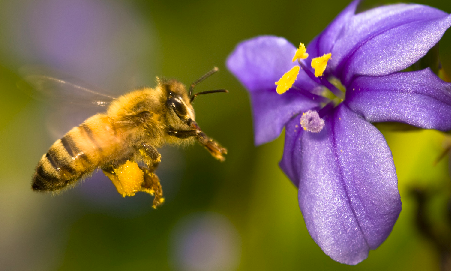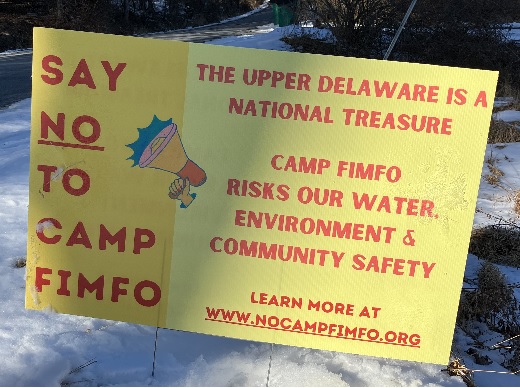
Radioactive Costs of Oil & Gas
November 6, 2021
Road Dumping Of Drilling Wastewater Is Tearing Apart Dirt Roads & Creating Environmental Hazards
November 20, 2021The following is a Neonic Fact Sheet prepared by a coalition of environmental groups, including DCS. Additional information can be found here:
- Neonic Fact Sheet with links and references
- DCS Petition to NYS in support of the Birds and Bees Protection Act (A7429/S699B)
- Report by the NRDC – Bigger Than Bees: How Neonics Contaminate Water, Threaten Ecosystems, and Cause Human Health Concerns in New York
- DCS Director Barbara Arrindell discusses neonics at the 2021 Narrowsburg Honey Bee Festival:
- Sign the online petition in support of the Birds and Bees Protection Act
Neonicotinoids or “neonics” are neurotoxic pesticides linked to massive bee and insect losses around the globe and, increasingly, to vast water and soil contamination, ecosystem–wide harms, and human health concerns in New York. Cornell University research reveals that the neonic uses that pose the greatests threats to New York’s bees are also those that provide little–to–no benefits to users or are easily replaceable with safer alternatives.The Birds and Bees Protection Act (A7429–Englebright/S699B–Hoylman) prohibits these wasteful uses—specifically, neonic–treated corn, soybean, and wheat seeds and non–agricultural, turf and ornamental uses—to provide a targeted, science–based approach to address the heart of New York’s neonic contamination crisis, benefiting New York’s environment, agricultural economy, and health.
Neonics Are Toxic, Persistent and Everywhere – As the world’s most widely used insecticides, neonics have made U.S. agriculture 48–times more harmful to insects since their introduction in the mid–1990s. Neonics permeate plants—turning their nectar, pollen, and fruit toxic. They can be applied to a plant’s roots or as a coating on a crop seed, which the entire plant then absorbs as it grows. Neonics also persist in soil, where they are easily carried long distances by rain or irrigation water. Today, neonics broadly contaminate New York’s water, soil, and plants, concentrating in areas of year–after–year use.
Neonics Kill Bees – Neonics are extremely toxic to insects, including bees. A robust body of scientific evidence links neonic use to massive bee population losses, including two comprehensive worldwide academic assessments, Cornell University research, and even a major pesticide–industry–funded field study—the largest to date. In New York, beekeepers lost 53% of their bee colonies last year, the second highest loss rate on record—suggesting possible similar catastrophic losses for the state’s 400+ native bee species. These losses threaten the state’s ecosystems and the estimated $439 million worth of pollination services pollinators provide to top state crops like apples, squash, tomatoes, blueberries, strawberries, cherries, and pears.
Neonics Kill Birds – Research links neonics to large declines in U.S. bird species—contributing to the 30% decline in North American birds seen in the last 50 years. Eating just one neonic–treated seed is enough to kill some songbirds, and even at low doses, neonics can harm birds’ immune systems, fertility, and navigation, and cause rapid weight loss—reducing birds’ chances of surviving in the wild. As neonics kill insect populations, birds also starve. In Europe, for example, declining bird populations were linked to very low levels of neonics in water, and neonics are a suspected cause of the steep decline in French farmland birds.
Neonics Contaminate New York Water and Debilitate Ecosystems, Harming Fish, Deer, and Other Wildlife – Neonics frequently show up in state water testing—including ~30% of Long Island groundwater samples—indicating a “very high probability” that the pesticides are causing “ecosystem–wide damage” in New York. Neonics hollow out ecosystems by eradicating aquatic insect populations that birds, fish, amphibians, and other animals depend upon for food. Recent research shows a Japanese fishery collapsed within a year of the introduction of neonics in nearby agricultural fields—and neonic levels later measured at the site match those commonly seen in New York water. Diminishing trout, salmon, and wild bird populations, in turn, threaten New York’s billion–dollar tourism and recreation industries. Neonic water contamination has also been linked to harm to bats and birth defects in white–tailed deer.
Neonics May Harm New Yorker’s Health – Monitoring by the U.S. Centers for Disease Control and Prevention shows that half the U.S. population is regularly exposed to neonics—with the highest levels found in children. This is particularly concerning given human and animal research linking neonics to potential neurological, developmental, and reproductive harms, including malformations of the developing heart and brain. While modern filtration systems remove neonics, standard chlorination treatment doesn’t, meaning homes that get water from groundwater, older treatment systems, or unfiltered supplies (like New York City) are at higher risk of finding neonics in their tap. Neonic residues also commonly contaminate produce and baby food, and because neonics permeate foods, they cannot be washed off.
Cornell Research Shows Most Harmful Neonic Uses Not Beneficial or Needed – In a June 2020 report, Cornell University analyzed every published peer–reviewed study on neonics’ harms to pollinators and the relative costs and benefits of neonics compared to likely alternatives —1,121 studies in total—revealing that the state’s largest and most harmful neonic uses provide little to no benefits to users or are easily replaceable wit h safer alternatives. In particular, the report finds neonic corn and soybean seed treatments—which account for an estimated 73% of the neonics used in New York agriculture —pose “substantial” risks to bees and other pollinators, yet provide “no overall net income benefits” to farmers. Likewise, non–agricultural lawn and garden uses posed some of the highest risks to pollinators, but were easily replaced with safer alternatives—aside from some key uses against invasive species. Other research shows that neonics can actually decrease yields by killing pollinators or pest predators (i.e., “good bugs”).
A7429/S699B Targets the Heart of the Widespread Neonic Contamination Problem in New York – While Europe completely banned outdoor use of the three major neonic chemicals, the Birds and Bees Protection Act (A7429/S699B) would address the heart of New York’s ecologically damaging neonic contamination problem by targeting only the high–cost, low–benefit neonic uses identified in the Cornell report. Its prohibitions targeting neonic–treated corn, soybean, and wheat seeds and on non–agricultural, ornamental and turf uses would eliminate the vast majority of neonics entering the state’s environment every year—without preventing other agricultural uses or treatment for invasive species. The bill also requires the New York Department of Environmental protection to consider other neonic uses for restricted use designation where appropriate. This commonsense, surgical, and science –based approach would benefit pollinators, the farmers who depend on them, New York’s ecosystems, and the countless New Yorkers who value clean soil, clean water, and their own health.




